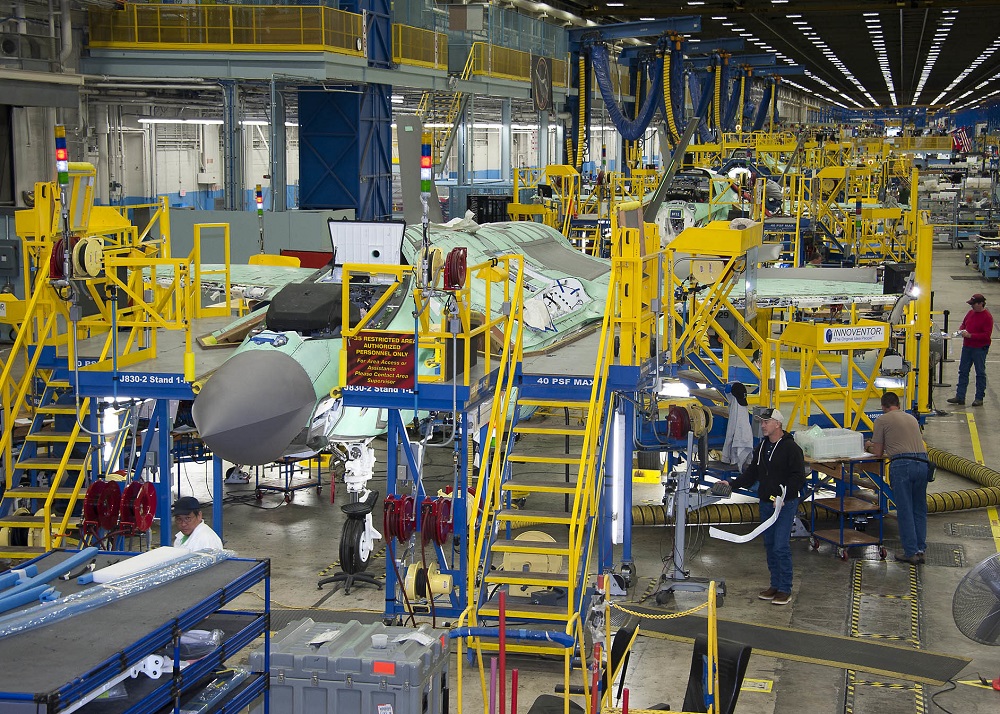
The 2023 defence strategic review calls for a whole-of-nation effort to secure Australia’s interests in an increasingly unstable world. Tasks include building supply-chain diversity and a national industrial base with the capacity to scale up. Whole-of-nation efforts are all the rage, but all too often they signal urgency while leaving the particulars of implementation up to some hazy notion of ‘everyone’. It’s worth asking what it takes to execute such a grand vision.
Details of the DSR policy realignment are a work in progress. If they are to achieve the sweeping goal of fostering a diverse and scalable industrial base, a critical component of that realignment must be innovation strategy. In this area, emerging trends risk running counter to broader objectives.
Innovation is the lifeblood of the defence industry. Properly managed, it does far more than equip the force with cutting-edge technologies. It creates an international comparative advantage, encouraging exports that drive profitability and push investment into Australian businesses. It deepens the markets Australia relies on for resilience and sovereign industrial capacity.
The Defence Department’s demand signal to industry—the requirements it puts out to tender—is its single most powerful lever in marshalling a large-scale response to today’s challenges. Defence’s latest effort to refine that demand signal is the Advanced Strategic Capabilities Accelerator.
Self-imposed constraints on ASCA procurement make it suited to addressing a particular category of requirements. Typical project durations will be limited to three years and will only begin once a clear path to acquisition is identified. ASCA’s funding is about $340 million per year—just 2.5% of the military equipment acquisition program. Broader defence research and development spending doesn’t take the total much higher than this—certainly not to the level of US defence R&D funding, which is nearly three-quarters the size of its procurement budget.
These process and funding constraints imply that projects must be small. They must address the neatly defined operational needs of end users. What does that mean for the industrial base as a whole?
As with any component of a modern economy, the defence industry is a deep network. The machines we see roaring overhead at airshows or sailing by in Sydney Harbour are the tip of the iceberg. International prime contractors garner all the attention since their names are stencilled on hulls and fuselages. But they depend on a vast array of tier-one suppliers.
Lockheed Martin can’t build an F-35 fighter jet without engines from Pratt & Whitney. Pratt & Whitney maintains similar relationships with a range of tier-two suppliers, forming a complex ecosystem that took 20 years to build. Many of those subcomponent suppliers rely on tier threes, and so on down to the nuts and bolts that hold everything together.
Designing and sustaining an F-35—or any other major weapon system—requires innovation throughout its massive supply chain. Defence departments don’t usually buy subsystems directly. Lockheed Martin does. BAE Systems does. But those subsystems require investment, and Defence needs a say in which capabilities require modernisation.
If Defence places undue focus on projects that can be developed quickly and fielded directly to the services, it will miss all of that ice below the waterline. It will miss the wide range of subsystems that go into modern military hardware.
It’s a useful exercise to browse the US government’s unclassified R&D budgets, such as this one for the US Air Force. I have argued elsewhere that early technology readiness levels (TRLs) are the most important area for governments to invest in. But take for granted that ASCA’s focus on productising others’ early-stage innovations fills a critical gap in the Australian innovation pipeline. Such mid-TRL projects would fall (in part) within the US R&D system’s budget activity five: system development and demonstration.
In 2023, the US Air Force spent US$7 million in SD&D dollars developing advanced infrared countermeasures to protect military aircraft. It spent US$26 million on protected tactical waveforms to guard against jamming of satellite communications signals. It spent US$22 million on ejection-seat upgrades to better accommodate women’s body types. Only in rare cases would the US Department of Defense buy such subcomponents directly. More likely, they will be incorporated by prime contractors into the next generation of satellites and fighter aircraft.
Even subsystems such as these don’t lie too far below the waterline. Dig deeper, and you’ll find other R&D projects to enable them, and more projects to enable those projects.
Australia is rightly proud of its early-stage innovation, and the Defence Science and Technology Group is undoubtedly working on projects like these. But there’s an existing path to fielding for such innovations: Defence’s Capability Acquisition and Sustainment Group. CASG maintains a broader perspective on acquisition of complex systems and their requirements across the supply chain.
By creating a distinct organisation focused on operationalising mid-TRL technologies and divorcing it from the broader acquisitions enterprise, Defence risks short-changing the important innovations that don’t result in headline-grabbing wins. Those technologies also need a path to development and acquisition, and the proximate buyer may not be Defence.
ASCA must create an innovation strategy in lockstep with the broader CASG enterprise. It must enable projects across the supply chain, even if those projects don’t directly purchase pieces of hardware that can be presented to soldiers in publicised ceremonies. It must be careful not to create a set of rules so constraining that the only things it is able to purchase are personal gear, small arms and quadcopters.
Modern militaries are complex systems of systems, requiring a robust industrial base that provides technological innovation throughout. Australia’s emerging innovation strategy, with its focus on quick wins, risks hollowing out that industrial base rather than building it up. It risks starving top-tier contractors of the subsystems they need to develop the next generation of truly transformative technologies. It risks accomplishing the opposite of its intended effect of building a resilient and scalable supply chain.

